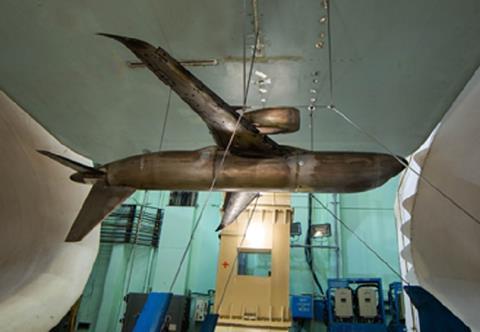Russian researchers have completed another phase of analysis of the domestically-powered Yakovlev SJ-100, examining its aerodynamic characteristics during take-off and landing.
The latest version of the twinjet will be equipped with Aviadvigatel PD-8 engines rather than the PowerJet SaM146 used on its Superjet 100 predecessor.
While the SJ-100 airframe has conducted its maiden flight, the aircraft used was still fitted with SaM146s.
The Central Aerohydrodynamic Institute has been studying the aircraft’s behaviour in a low-speed windtunnel, along with simulation of ground effects.

Its analysis covered the characteristics of airflow instability in landing configuration, when the flaps and spoilers are deployed while the landing-gear is extended.
Conclusions from the work will be used to determine optimal angles of flap deflection to reduce the intensity of wake vortex on approach.
“Reducing the wake vortex from the aircraft will make it possible in future to reduce the safe distance between aircraft [on approach] and thereby increase the airport’s capacity,” says aircraft aerodynamics department head Nikolai Bragin.
Yakovlev is developing the SJ-100, which will have a higher proportion of Russian-built components, to reduce the company’s dependence on foreign suppliers.


























